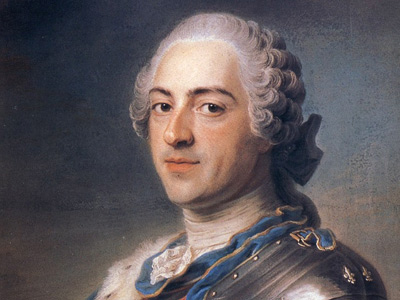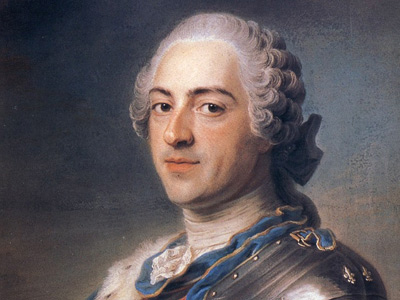Personal Government (1743–1756)
After Fleury's death in January 1743, his war minister, the Duke of Noailles, showed the King a letter that Louis XIV had written to his grandson, Philip V of Spain; it counseled: "Don't allow yourself to be governed; be the master. Never have a favorite or a prime minister. Listen, consult your Council, but decide yourself. God, who made you King, will give you all the guidance you need, as long as you have good intentions." Louis followed this advice and decided to govern without a prime minister. Two of his ministers took the most prominent positions in his government; the finance minister, Jean Baptiste de Machault D'Arnouville, and the minister of the armies, Comte d'Argenson.
With the end of the war, Louis decided to take the opportunity to reduce the debt and modernize the system of taxation of the Kingdom. The package of reforms was put together by his finance minister D'Arnouville and was approved by the King and presented in two decrees issued in May 1749. The first measure was an issue of bonds, paying five percent interest, to pay off the 36 million livres of debt caused by the cost of the war. This new measure was an immediate success. The second measure was the abolition of the dixième, a tax of ten percent of revenue, which had been created to finance the war, and its replacement by the vingtième, a tax of five percent on net revenue, which, unlike the dixième, taxed the income of all French citizens, including for the first time the income from the property of the clergy and the nobility.
While the new tax was supported by many, including Voltaire, it met immediate and fierce resistance from both the nobility and the church. When on 5 May 1749 it was presented for formal registration to the Parlement of Paris, the assembly composed of high nobles and wealthy Parisians who had purchased seats, it was rejected by a vote of one hundred six to forty nine; the majority asked for more time to consider the project. The King responded by demanding immediate registration, which the Parlement reluctantly granted on 19 May. Resistance to the new measures grew with the church and in the provinces, which had their own parlements. While the Parlements of Burgundy, Provence and Artois bowed to the King's demands, Brittany and Languedoc refused. The royal government closed down the Parlement of Brittany, ordered the members of the Parlement of Languedoc to return to their estates and parishes, and took direct control of the Provence.
Within Paris, the battle between the King and Parlement was fought over the status of the Hôpital Général, a semi-religious organization which operated six different hospitals and shelters in Paris, with a staff of some five thousand persons. Many of the hospital staff and officials were Jansenists, while the board of directors of the hospital included many prominent members of the Parlement of Paris. In 1749, the King decided to purge the hospital of Jansenists and corruption, appointed a new "Supérieure" against the will of the administrators, who resigned, then appointed four temporary administrators, and asked the First President of the Parlement of Paris, René Nicolas Charles Augustin de Maupeou, to implement his decree for the reorganization of the hospital. De Maupeou refused to carry out the decree without the authorization of the Parlement, and the Parlement, without taking any action, went on vacation. On 20 November, when the Parlement returned, the King again summoned de Maupeou for an audience and again demanded action without delay. This time the Parlement members met but refused to discuss the Hospital. On 28 January 1752, the King instructed the Grand Council to change the administration of the Hospital without the approval of the Parlement. Voltaire, describing the affair, wrote, "Never before has such a small affair caused such a great emotion of the spirit." It was the first overt disobedience of the legislature against the King, and one of the first signs that the Parlement believed it, not the King, was the legitimate source of laws in the nation.
The King's original plans to tax the church also ran into difficulty. A royal decree ordered all the clergy to submit a declaration of their revenue by 17 February 1751, but that day passed without any declarations given. Instead it became known that the King had quietly issued a new decree in December, 1750, canceling the tax and relying again, entirely, on the "don gratuit", the voluntary donation by the church of 1,500,000 livres. Under the new decree, instead of a tax, the church would each year collect a comparable sum and donate it freely to the government. His support for the church came both from the teachings of his tutor, Cardinal Fleury, and his gratitude to Archbishop de Beaumont, who defended him against the attacks of the Jansenists and the criticisms of the Parlement, and the Archbishop's tolerance of the King's own personal life and mistresses.
Despite the French victories, the war dragged on both in the Netherlands and in Italy, where Maréchal Belle-Isle was besieging the Austrians in Genoa. By the summer of 1747 France The Kingdom of France is the historiographical name or umbrella term given to various political entities of France in the medieval and early modern period. It was one of the most powerful states in Europe since the High Middle Ages. It was also an early colonial power, with possessions around the world. Colonial conflicts with Great Britain led to the loss of much of its North American holdings by 1763. The Kingdom of France adopted a written constitution in 1791, but the Kingdom was abolished a year later and replaced with the First French Republic. occupied the entire Austrian Netherlands
The Kingdom of France is the historiographical name or umbrella term given to various political entities of France in the medieval and early modern period. It was one of the most powerful states in Europe since the High Middle Ages. It was also an early colonial power, with possessions around the world. Colonial conflicts with Great Britain led to the loss of much of its North American holdings by 1763. The Kingdom of France adopted a written constitution in 1791, but the Kingdom was abolished a year later and replaced with the First French Republic. occupied the entire Austrian Netherlands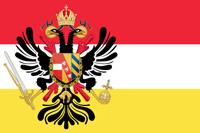 The Austrian Netherlands was the territory of the Burgundian Circle of the Holy Roman Empire between 1714 and 1797. The period began with the Austrian acquisition of the former Spanish Netherlands under the Treaty of Rastatt in 1714 and lasted until Revolutionary France annexed the territory during the aftermath of the Battle of Sprimont in 1794 and the Peace of Basel in 1795. (modern-day Belgium). In March, 1748, Louis proposed a conference in Aix-en-Chapelle to bring the war to an end. The process was advanced by the capture of Maastricht by the Maréchal de Saxe on 10 April 1748. Britain, pressed by the threat of a French invasion of rest of the Netherlands, urged a quick settlement, despite objections from Austria
The Austrian Netherlands was the territory of the Burgundian Circle of the Holy Roman Empire between 1714 and 1797. The period began with the Austrian acquisition of the former Spanish Netherlands under the Treaty of Rastatt in 1714 and lasted until Revolutionary France annexed the territory during the aftermath of the Battle of Sprimont in 1794 and the Peace of Basel in 1795. (modern-day Belgium). In March, 1748, Louis proposed a conference in Aix-en-Chapelle to bring the war to an end. The process was advanced by the capture of Maastricht by the Maréchal de Saxe on 10 April 1748. Britain, pressed by the threat of a French invasion of rest of the Netherlands, urged a quick settlement, despite objections from Austria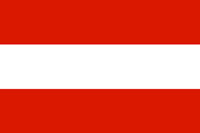 The Archduchy of Austria was a major principality of the Holy Roman Empire and the nucleus of the Habsburg monarchy. With its capital at Vienna, the archduchy was centered at the Empire's southeastern periphery. The archduchy's history as an imperial state ended with the dissolution of the Holy Roman Empire in 1806. It was replaced with the Lower and Upper Austria crown lands of the Austrian Empire. and Sardinina. The Treaty was quickly negotiated and signed by all the parties in September and October 1748. Louis was also eager for a quick settlement, because the naval war with Britain was extremely costly to French maritime trade. The proposition of Louis was surprisingly generous; in the Treaty of Aix-la-Chapelle, Louis offered to return all of the territories he had conquered in the Netherlands to the Austrians, Maastricht to the Dutch
The Archduchy of Austria was a major principality of the Holy Roman Empire and the nucleus of the Habsburg monarchy. With its capital at Vienna, the archduchy was centered at the Empire's southeastern periphery. The archduchy's history as an imperial state ended with the dissolution of the Holy Roman Empire in 1806. It was replaced with the Lower and Upper Austria crown lands of the Austrian Empire. and Sardinina. The Treaty was quickly negotiated and signed by all the parties in September and October 1748. Louis was also eager for a quick settlement, because the naval war with Britain was extremely costly to French maritime trade. The proposition of Louis was surprisingly generous; in the Treaty of Aix-la-Chapelle, Louis offered to return all of the territories he had conquered in the Netherlands to the Austrians, Maastricht to the Dutch The Dutch Republic was a confederation that existed from 1579, during the Dutch Revolt, to 1795. It was a predecessor state of the Netherlands and the first fully independent Dutch nation state. Although the state was small and contained only around 1.5 million inhabitants, it controlled a worldwide network of seafaring trade routes. The income from this trade allowed the Dutch Republic to compete militarily against much larger countries. It amassed a huge fleet of 2,000 ships, initially larger than the fleets of England and France combined., Nice and Savoy to the Sardinians, and Madras in India to the English. The Austrians would give the Duchy of Parma and some other territory to the infant Spanish King, Philippe, while Great Britain
The Dutch Republic was a confederation that existed from 1579, during the Dutch Revolt, to 1795. It was a predecessor state of the Netherlands and the first fully independent Dutch nation state. Although the state was small and contained only around 1.5 million inhabitants, it controlled a worldwide network of seafaring trade routes. The income from this trade allowed the Dutch Republic to compete militarily against much larger countries. It amassed a huge fleet of 2,000 ships, initially larger than the fleets of England and France combined., Nice and Savoy to the Sardinians, and Madras in India to the English. The Austrians would give the Duchy of Parma and some other territory to the infant Spanish King, Philippe, while Great Britain The Kingdom of Great Britain was a sovereign country in Western Europe from 1 May 1707 to the end of 31 December 1800. The state was created by the 1706 Treaty of Union and ratified by the Acts of Union 1707, which united the kingdoms of England (which included Wales) and Scotland to form a single kingdom encompassing the whole island of Great Britain and its outlying islands, with the exception of the Isle of Man and the Channel Islands. would give France Louisburg and the island of Cape Breton, both in Nova Scotia. France also agreed to expel the Stuart pretender to the English throne from its territory.
The Kingdom of Great Britain was a sovereign country in Western Europe from 1 May 1707 to the end of 31 December 1800. The state was created by the 1706 Treaty of Union and ratified by the Acts of Union 1707, which united the kingdoms of England (which included Wales) and Scotland to form a single kingdom encompassing the whole island of Great Britain and its outlying islands, with the exception of the Isle of Man and the Channel Islands. would give France Louisburg and the island of Cape Breton, both in Nova Scotia. France also agreed to expel the Stuart pretender to the English throne from its territory.
The end of the war had caused celebration in Paris, but the publication of the details of the treaty on 14 January 1749 caused dismay and anger. The Stuart pretender to the British throne refused to leave Paris and was acclaimed by the Parisians. He was finally arrested on 10 December 1748, and transported by force to Switzerland. The French military commanders, including De Saxe, were furious about giving up the Spanish Netherlands. The King's defense of his action was practical: he did not want the Netherlands to be a permanent source of contention between France and other powers; he also felt that France had already reached its proper borders, and it was better to cultivate its prosperity rather than make it larger. His basis was also religious; he had been taught by Fleury that the Seventh Commandment forbade taking the property of others by fraud or violence. Louis often cited a Latin maxim declaring, "if anyone who asks by what means he can best defend a kingdom, the answer is, by never wishing to augment it." He also received support from Voltaire, who wrote, "It seems better, and even more useful for the court of France to think about the happiness of its allies, rather than to be given two or three Flemish towns which would have been the eternal object of jealousy." The King did not have the communication skills to explain his decision to the French public, and did not see any need to do so. The news that the king had restored the Southern Netherlands to Austria was met with disbelief and bitterness. The French obtained so little of what they had fought for that they adopted the expressions Bête comme la paix ("Stupid as the peace") and Travailler pour le roi de Prusse ("To work for the king of Prussia", i.e. working for nothing).
Debut of the Seven Years' War
The peace achieved by Louis with the Treaty of Aix-la-Chapelle lasted only seven years. At the end of August, 1755, Marie Therese, the Empress of Austria, discreetly wrote a letter to Louis XV, which was passed by the Austrian ambassador in Paris to Madame de Pomapadour for delivery to the King. She proposed a secret alliance between Austria and France, to meet the threats of the growing power of Prussia,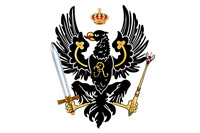 The Kingdom of Prussia was a German kingdom that constituted the state of Prussia between 1701 and 1918. It was the driving force behind the unification of Germany in 1871 and was the leading state of the German Empire until its dissolution in 1918. Although it took its name from the region called Prussia, it was based in the Margraviate of Brandenburg. Its capital was Berlin. which was still formally an ally of France, and Britain.
The Kingdom of Prussia was a German kingdom that constituted the state of Prussia between 1701 and 1918. It was the driving force behind the unification of Germany in 1871 and was the leading state of the German Empire until its dissolution in 1918. Although it took its name from the region called Prussia, it was based in the Margraviate of Brandenburg. Its capital was Berlin. which was still formally an ally of France, and Britain.
In the New World, conflict had already begun between Britain and France. The French colonies were at an enormous demographic disadvantage; there were less than 70,000 French colonists spread over a territory from the Saint Lawrence River to the Great Lakes extending down the Ohio and Mississippi River valleys down to Louisiana (named for Louis's grandfather, Louis XIV); compared with 300,000 in the British colonies. To defend its territories. France had constructed Fort Duquesne to defend their frontier against the Americans; Britain sent the young George Washington with a small force to construct his own fortification, Fort Necessity, nearby. In 1752, after the killing of French envoy, Joseph Coulon de Jumonville, the French sent reinforcements and compelled Washington and his men to withdraw.
The undeclared French and Indian War followed, with Britain treating the French colonies as an enemy. In 1755, the British seized 300 French merchant ships. In January 1756, Louis sent an ultimatum to London, which was rejected by the British government. A few months later, on 16 January 1756, Frederick the Great of Prussia signed the Treaty of Westminster, allying himself with Britain. Louis responded immediately on 1 May 1756 by sealing a formal defensive treaty with Austria, the first Treaty of Versailles, offering to defend Austria in case of a Prussian attack. This was a complete reversal of France's historic conflict with Austria, which had been underway for nearly two hundred years, and it was shocking to many in the French Court.
Louis declared war on England on 9 June 1756, and success seemed certain. A French fleet in the Mediterranean defeated the British at the Battle of Minorca of 1756, and captured that island. The French army greatly outnumbered the British and Prussians on the continent. The French army won the surrender of the British forces of the Duke of Comberland at Closterseven. Another French army invaded Saxony and Hanover, the ancestral home of King George II. However, the best French commander, Maurice de Saxe, had died two years after the War of the Austrian Succession, and the new French commanders, Charles, Prince of Soubise, the Duke D'Estrees and the Duke de Broglie detested each other, and were rarely willing to cooperate. In August Frederick of Prussia made a lightning strike into Saxony and on 5 November 1757, though outnumbered by the French nearly two to one, decisively defeated the army of the Prince de Soubise at the Battle of Rossbach. The new British Prime Minister, William Pitt, named a new commander, Duke Ferdinand of Brunswick-Wolfenbüttel, and the French armies were gradually pushed back to the Rhine, and defeated again at the Battle of Crefield on 23 June. Thereafter, Britain and Prussia held the upper hand, tying down the French army in the German states along the Rhine.
British naval supremacy prevented France from reinforcing its colonies overseas, and British naval squadrons raided the French coast at Cancale and Le Havre and landed on the Ile d'Aix and Le Havre. In 1759 the British seized Martinique and Guadeloupe in the West Indies, and captured Port Louis and Quebec. A series of naval defeats forced Louis to abandon plans for invasion of Britain. In India, the French colony at Pondicherry was surrounded by the British. The principal French outpost at Pondicherry in India was surrounded by the British, and surrendered the following year. On 8 September 1760, Montreal surrendered, bringing to an end French rule in Canada. Martinique fell to the British in 1762.
Assassination Attempt
On 5 January 1757, as the King was getting into his carriage in the courtyard of the Grand Trianon Versailles, a demented man, Robert-François Damiens, pushed through the King's guards and attacked the King, stabbing him in the side with a small knife. The King's guards seized Damien, and the King ordered them to hold him but not harm him. The King walked up the steps to his rooms at the Trianon, where he found he was bleeding seriously. He summoned his doctor and a priest, and then fainted. Louis was saved from greater harm by the thickness of the winter clothing he was wearing. When the news reached Paris, anxious crowds gathered in the streets. The Pope and the Empress of Austria and King George II, with whom France was at war, sent messages hoping for his swift recovery. Damien was tortured to see if he had accomplices, and was tried before the Parlement of Paris, which had been the most vocal critic of the King. The Parlement demonstrated its loyalty to the King by sentencing Damiens to the most severe possible penalty; On 28–29 March 1757 Damien was executed on the Place de Grève in Paris by drawing and quartering, following which his body was burned on a bonfire. The house where he was born was burned down, his father, wife and daughter were banished from France, and his brothers and sisters were required to change their name. The King recovered physically very quickly, but the attack had a depressive effect on his spirits. One of his chief courtiers, Duford de Chervrny, wrote afterwards: "it was easy to see that when members of the court congratulated him on his recovery, he replied, 'yes, the body is going well', but touched his head and said, 'but this goes badly, and this is impossible to heal.' After the assassination attempt, the King invited his heir, the Dauphin, to attend all of the Royal Council meetings, and quietly closed down the chateau at Versailles where he had met with his short-term mistresses."
Rebellion of the Parlements
The Parlements were assemblies of nobles in Paris and older regions of France, whose members served as magistrates and judged civil cases. Their members included both hereditary nobles and wealthy citizens who had purchased their seats. Several of the Parlements, such as those of Rouen and Provence, had been in existence for centuries, and saw themselves as the legitimate governments in their provinces. As Louis reorganized the government and appointed his own intendents in the provinces, the authority and prestige of the Parlements decreased, and price of the seats dropped. In Franche-Comté, Bordelaise and Rouen, the Parlements refused to follow the decrees of the royal intendants. When the Intendants of King attempted the assert their authority and collect taxes from all classes, the Parlements went on strike, refusing to proceed with the judgment of civil cases. The civil justice system came to a halt. In 1761, the provincial Parlement of Normandy in Rouen wrote a protest to the King, explaining that the King had the exclusive power to tax, but the Parlement had the exclusive right to collect the money. The King rejected the explanation and overruled the Parlement, banished some of his most provocative Parliament members to their estates. For the rest of his reign, the Parlements swore allegiance to the King, but took every opportunity to resist his new taxes and the King's authority. This was one of the seeds of resistance to the King's authority that was to turn into a Revolution less than thirty years later.
Achievements and Dismissal of the Government
The Comte d'Argenson served as the Minister of War from 1743 until 1747. He was an advocate of the continuation of the absolute monarchy in the style of Louis XIV. He was responsible for creating the first school for engineers in France at Mézières (1749–50); thanks to the trained engineers, France had the finest system of roads and bridges in Europe. He also established the military academy, the École Militaire, and, following the model of the Prussians, established military training camps and exercises, and helped rebuild French military power.
Machaud D'Arnouville was brought into the government with the sponsorship of d'Argenson, but the two men gradually became rivals and enemies. D'Arnouville was the Controller of Finances from 1745 to 1754, then Minister of Navy from 1754-57. He was the creator of the unpopular "Vingtieme" tax (1749), which taxed all citizens, including the nobility, at the same rate, and also freed the prices of grain (1754), which initially greatly increased agricultural production. The fluctuation of grain prices would eventually become a factor in the French Revolution.
On 1 February 1757, the King abruptly dismissed both d'Arnouville and d'Argenson, and exiled them to their estates; The King held them responsible for not preventing the assassination attempt, and their government displeased Madame de Pompadour.
HISTORY
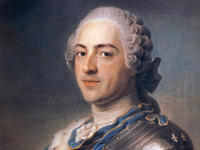
RESOURCES
This article uses material from the Wikipedia article "Louis XV of France (1710-1774)", which is released under the Creative Commons Attribution-Share-Alike License 3.0.
© Stories Preschool. All Rights Reserved.
